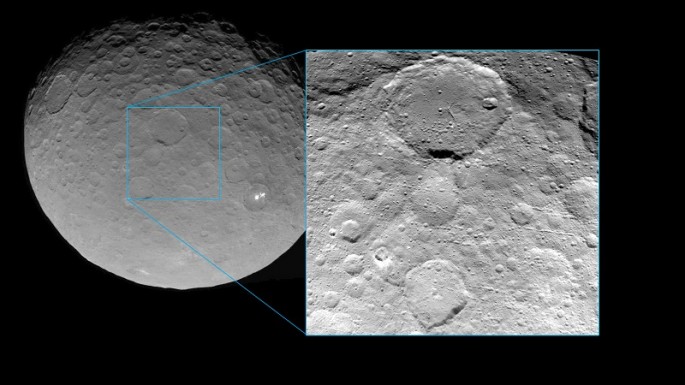NASA's Dawn spacecraft just revealed the never before seen surface of the dwarf planet Ceres showing incredible geological features that suggest a turbulent past.
This newest image was captured by Dawn on May 23, where the robotic probe was just 3,200 miles away from Ceres. The resolution of the image is about 1,600 feet per pixel according to the mission team.
NASA officials describe the image where Dawn's view captured many secondary craters that were produced during re-impact of debris that were scattered from larger impact sites. To date, more smaller surface details are becoming more enhanced and visible as Dawn is now heading down Ceres' lower orbit to map the dwarf planet.
Scientists reveal that the region is exactly located at 13 degrees and 51 degrees on a northern latitude and 182 degrees and 228 degrees on an eastern latitude. This image has been optimized and projected onto a globe model of Ceres where an indication reveals a smaller black notch found at the upper right region.
NASA's Dawn mission is estimated to cost US $473 million where it was launched in 2007 to explore for the first time Ceres and Vesta which are considered to be the two largest cosmic objects found in the major asteroid belt between Mars and Jupiter.
Scientists believe that these rocky remnants are left overs from the solar system's early formation stages where Dawn can provide data for a better understanding how rocky planets like Earth and Mars came to be.
Before Dawn reached Ceres, it orbited the 330 mile wide Vesta during July 2011 to September 2012 where it then travelled towards the 590-mile Ceres and arrived last March. This mission marks Dawn as the first spacecraft to orbit two objects outside Earth and the moon and the first one to orbit a dwarf planet.



























